*NURSING > QUESTIONS & ANSWERS > Chapter 37 questions with accurate answers (All)
Chapter 37 questions with accurate answers
Document Content and Description Below
The nurse obtains a health history from a 65-year-old patient with a prosthetic mitral valve who has symptoms of infective endocarditis (IE). Which question by the nurse is most appropriate? a. “... Do you have a history of a heart attack?” b. “Is there a family history of endocarditis?” c. “Have you had any recent immunizations?” d. “Have you had dental work done recently?” ANS: D Dental procedures place the patient with a prosthetic mitral valve at risk for infective endocarditis (IE). Myocardial infarction (MI), immunizations, and a family history of endocarditis are not risk factors for IE. DIF: Cognitive Level: Apply (application) REF: 812 TOP: Nursing Process: Assessment MSC: NCLEX: Physiological Integrity 2. During the assessment of a 25-year-old patient with infective endocarditis (IE), the nurse would expect to find a. substernal chest pressure. b. a new regurgitant murmur. c. a pruritic rash on the chest. d. involuntary muscle movement. ANS: B New regurgitant murmurs occur in IE because vegetations on the valves prevent valve closure. Substernal chest discomfort, rashes, and involuntary muscle movement are clinical manifestations of other cardiac disorders such as angina and rheumatic fever. DIF: Cognitive Level: Understand (comprehension) REF: 811 | 821 TOP: Nursing Process: Assessment MSC: NCLEX: Physiological Integrity 3. The nurse identifies the nursing diagnosis of decreased cardiac output related to valvular insufficiency for the patient with infective endocarditis (IE) based on which assessment finding(s)? a. Fever, chills, and diaphoresis b. Urine output less than 30 mL/hr c. Petechiae on the inside of the mouth and conjunctiva d. Increase in heart rate of 15 beats/minute with walking ANS: B Decreased renal perfusion caused by inadequate cardiac output will lead to decreased urine output. Petechiae, fever, chills, and diaphoresis are symptoms of IE, but are not caused by decreased cardiac output. An increase in pulse rate of 15 beats/minute is normal with exercise. DIF: Cognitive Level: Apply (application) REF: 812 TOP: Nursing Process: Diagnosis MSC: NCLEX: Physiological Integrity [Show More]
Last updated: 1 year ago
Preview 1 out of 13 pages
Instant download
.png)
Buy this document to get the full access instantly
Instant Download Access after purchase
Add to cartInstant download
Reviews( 0 )
Document information
Connected school, study & course
About the document
Uploaded On
Aug 14, 2021
Number of pages
13
Written in
Additional information
This document has been written for:
Uploaded
Aug 14, 2021
Downloads
0
Views
40

.png)
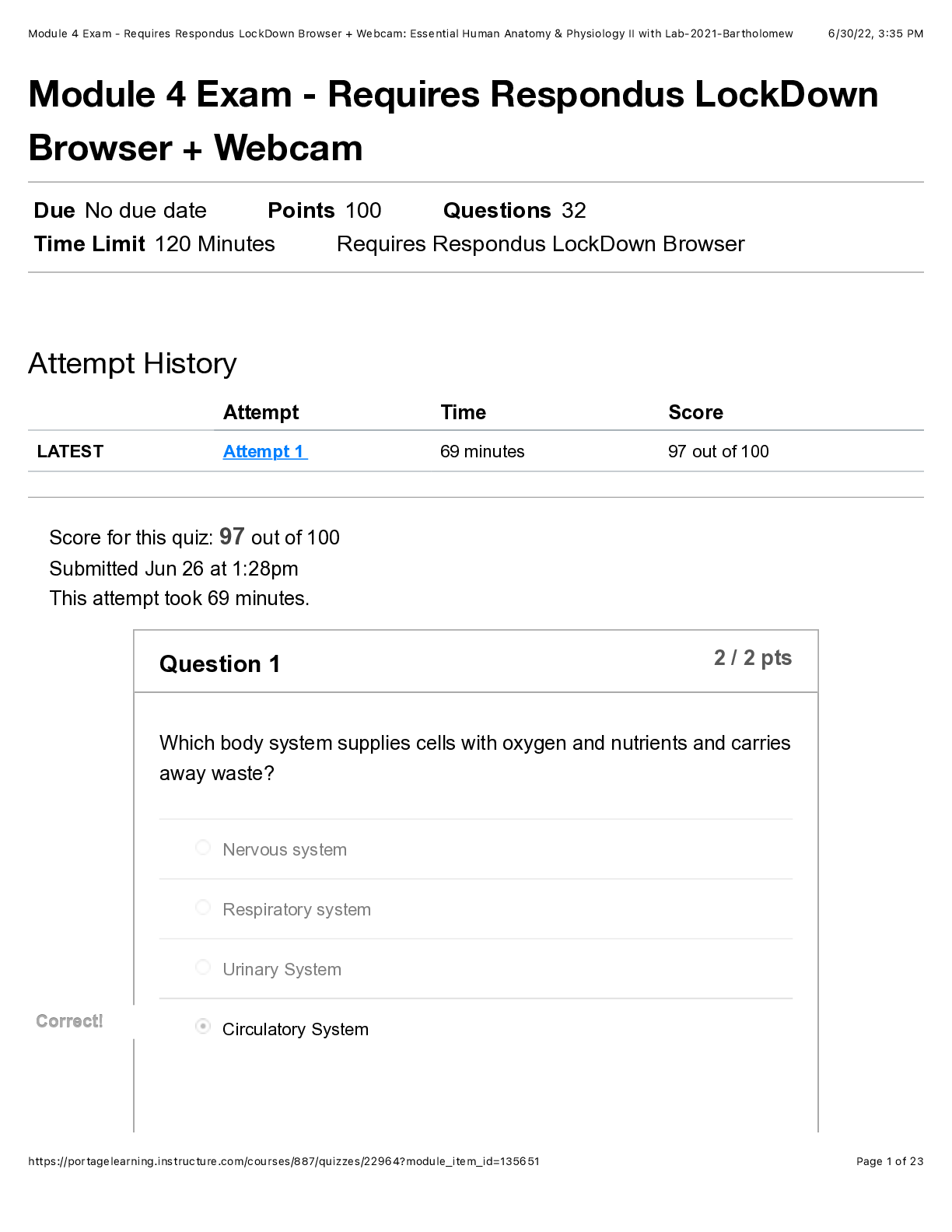
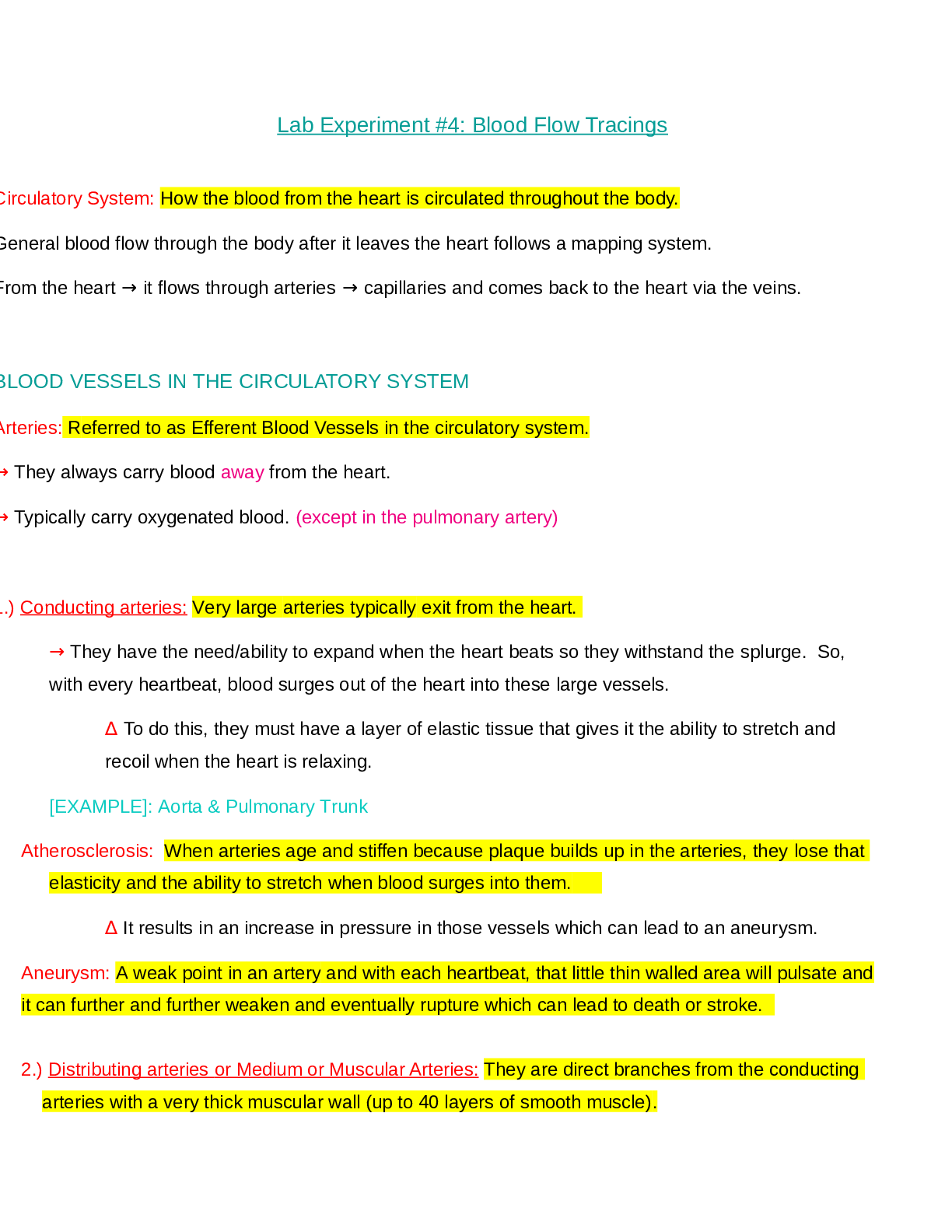

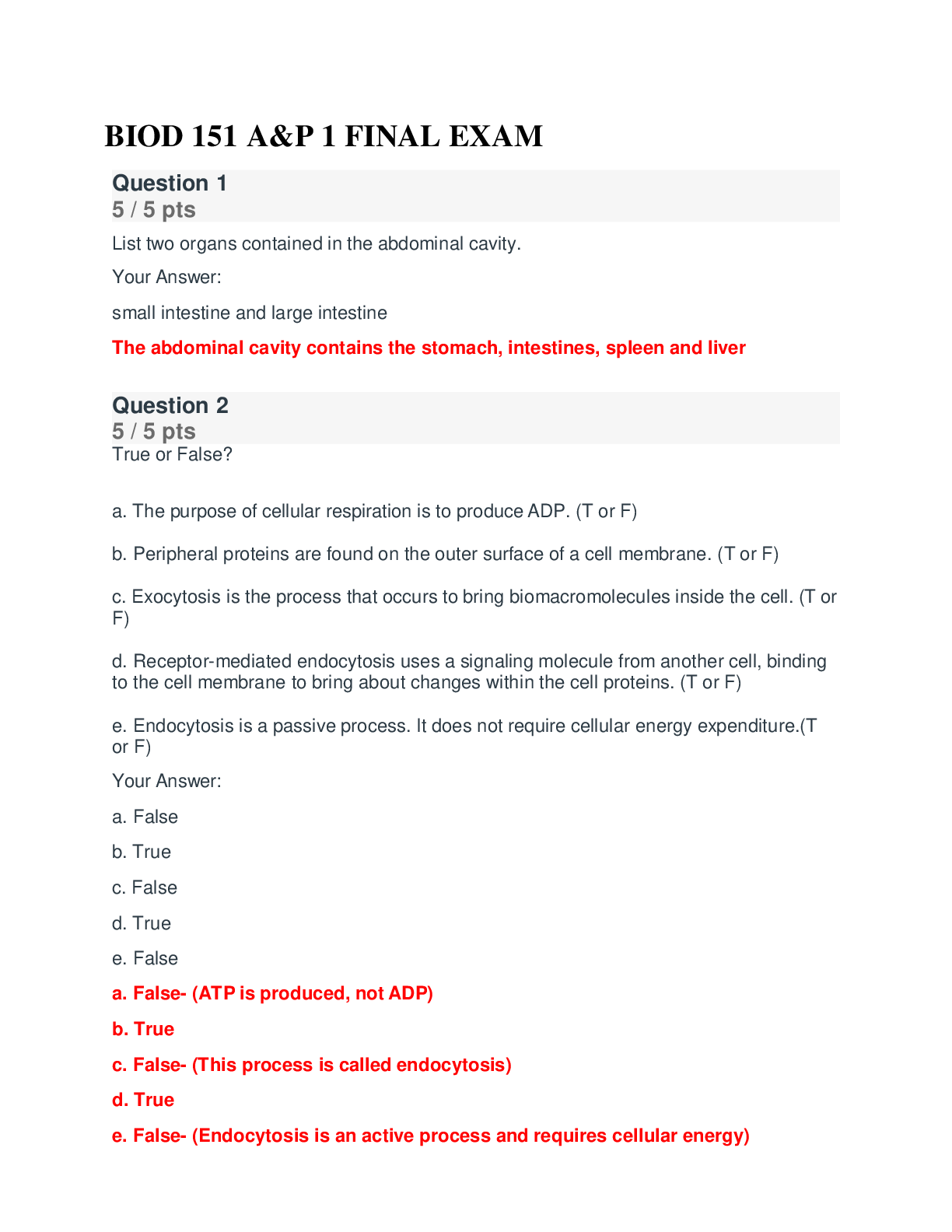
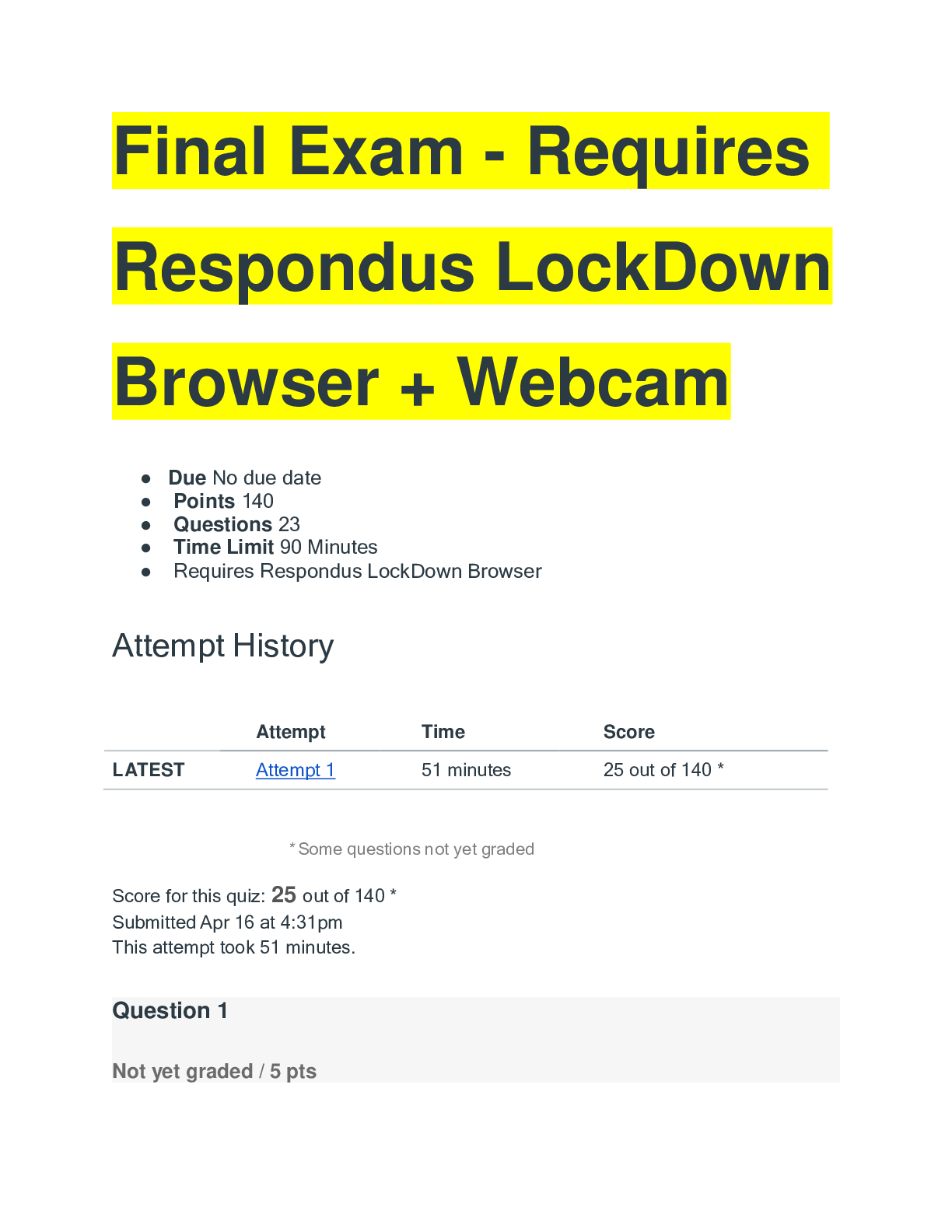



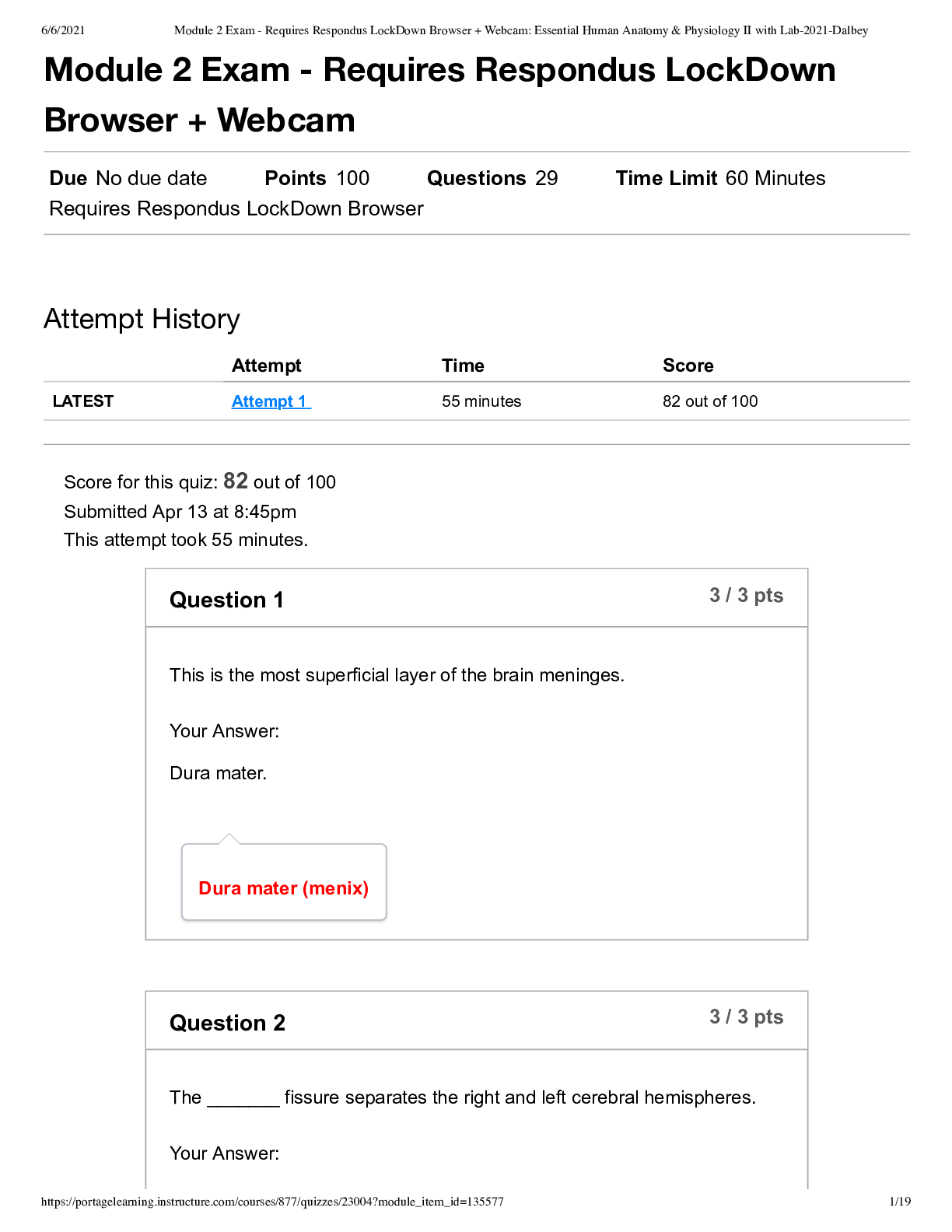
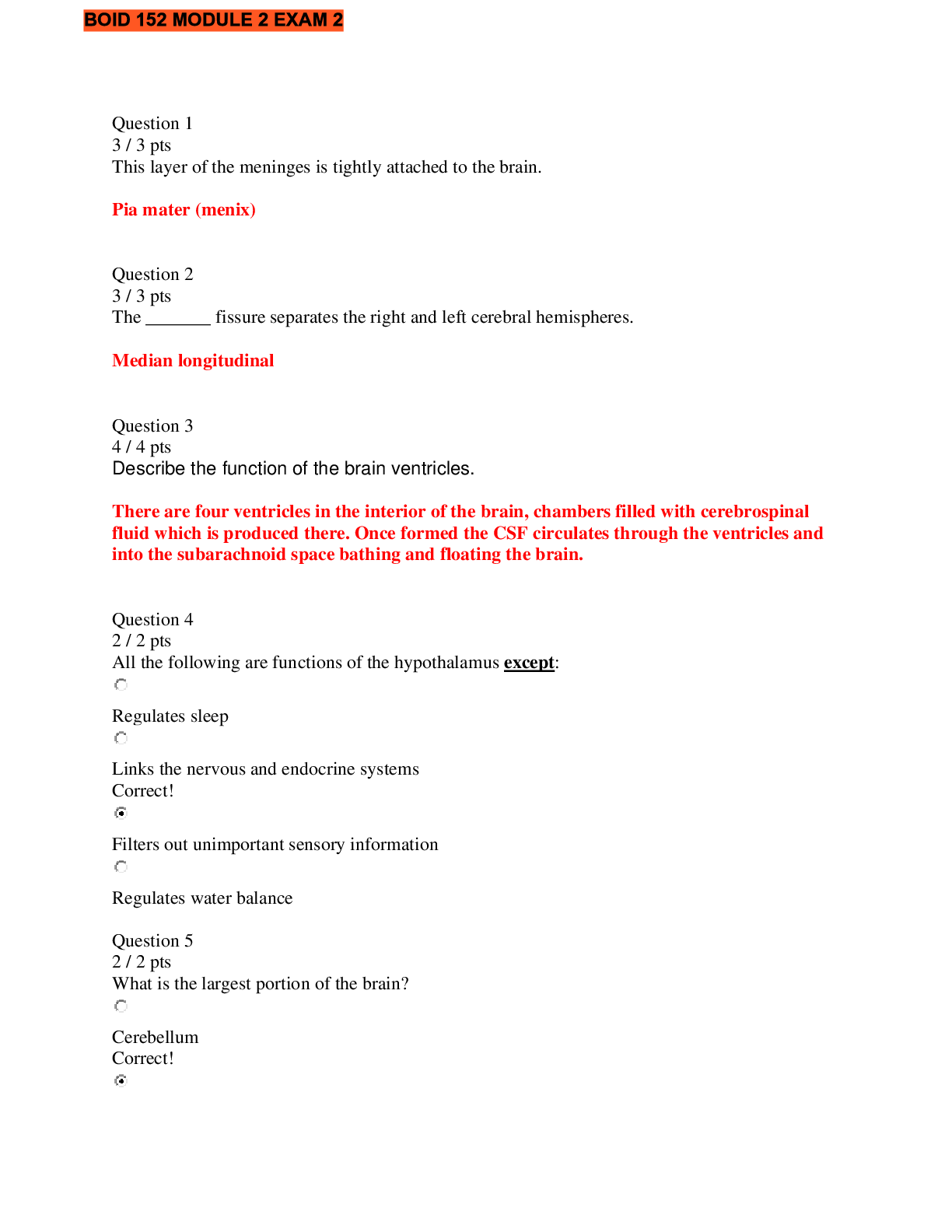
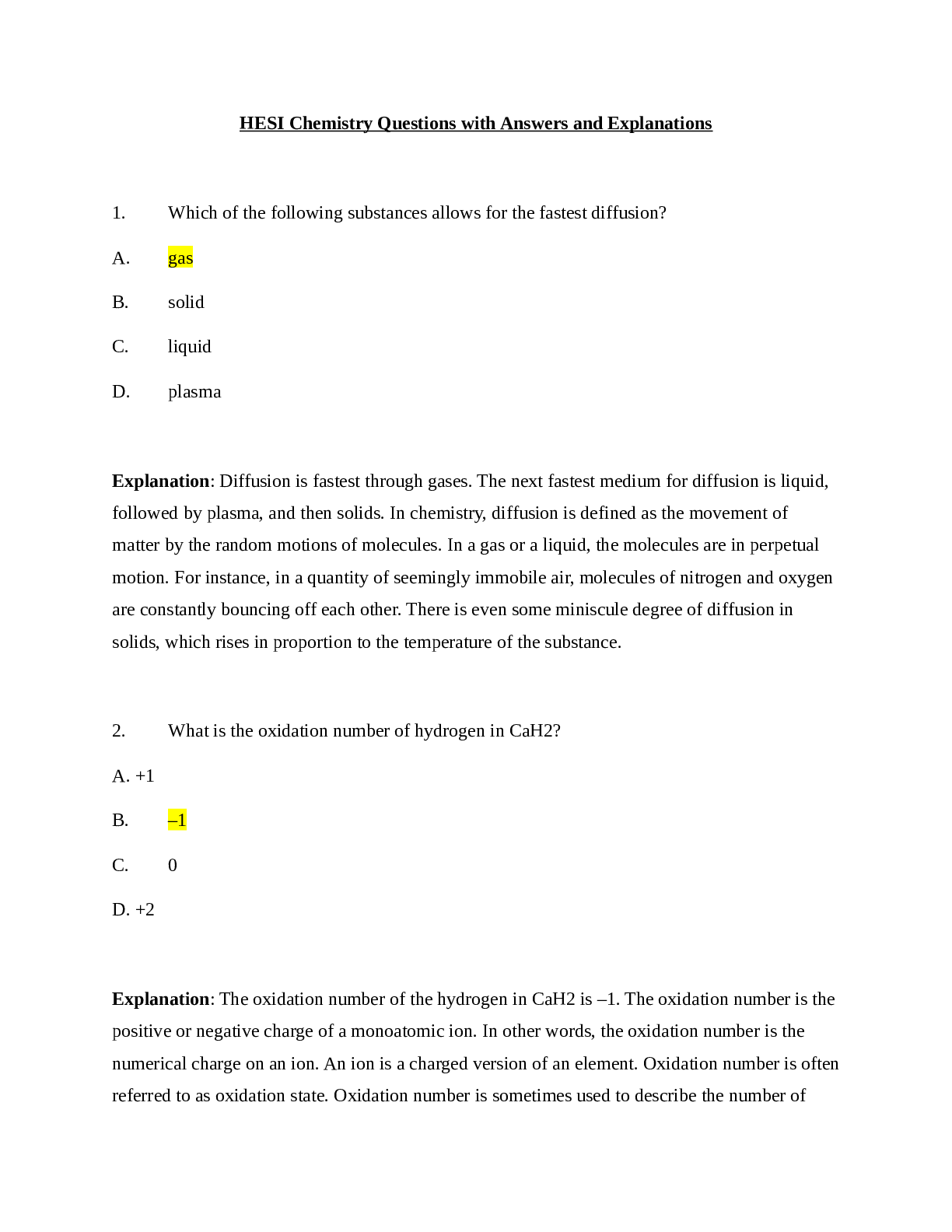

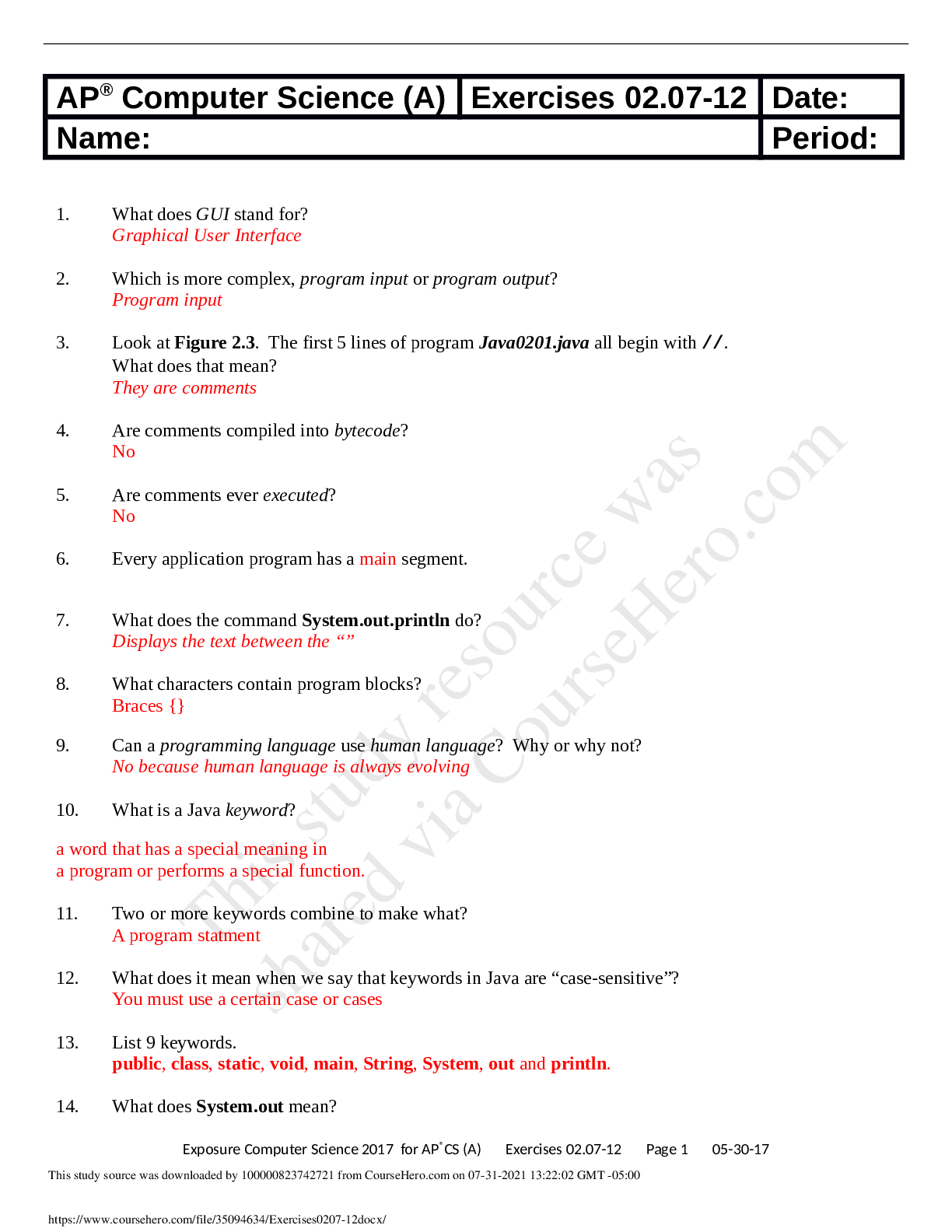
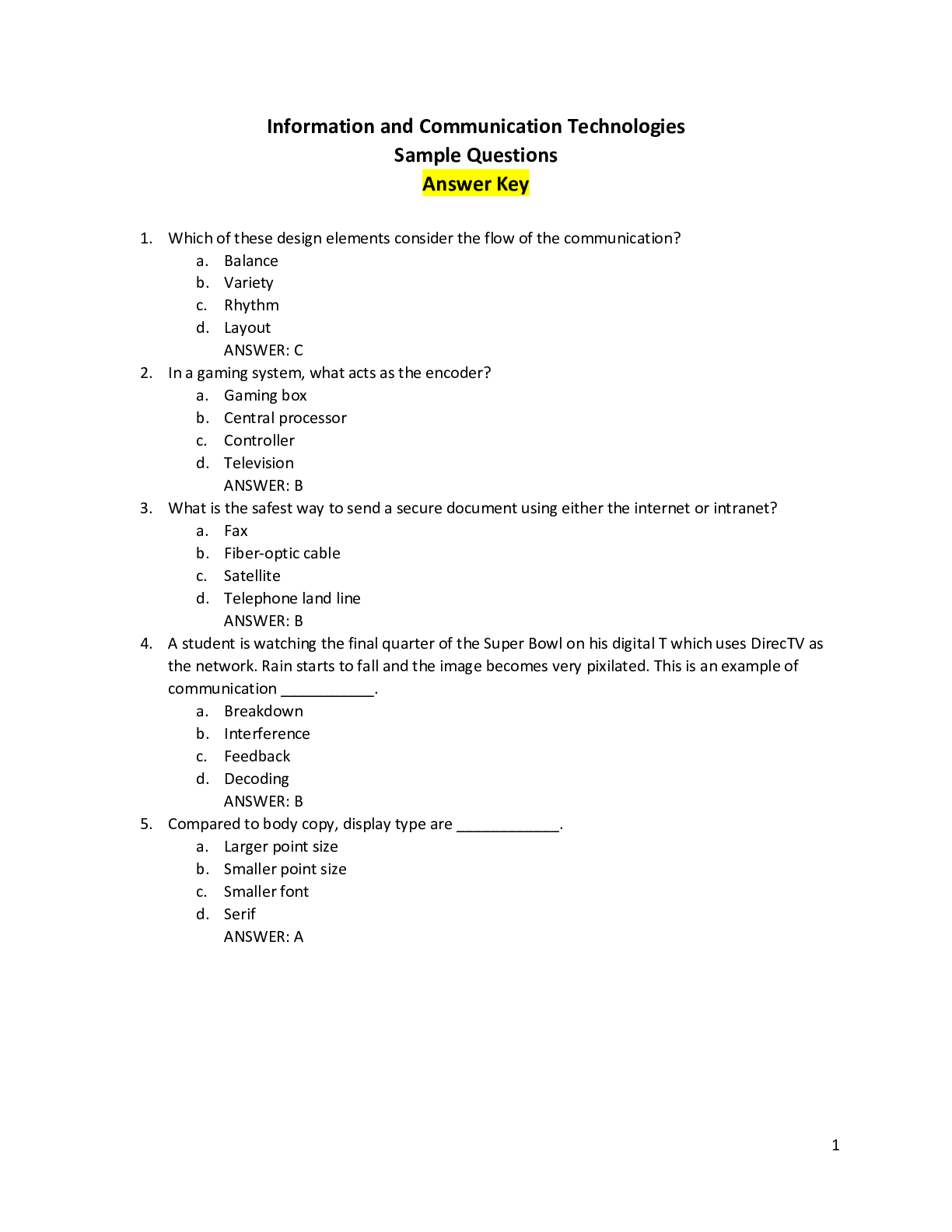
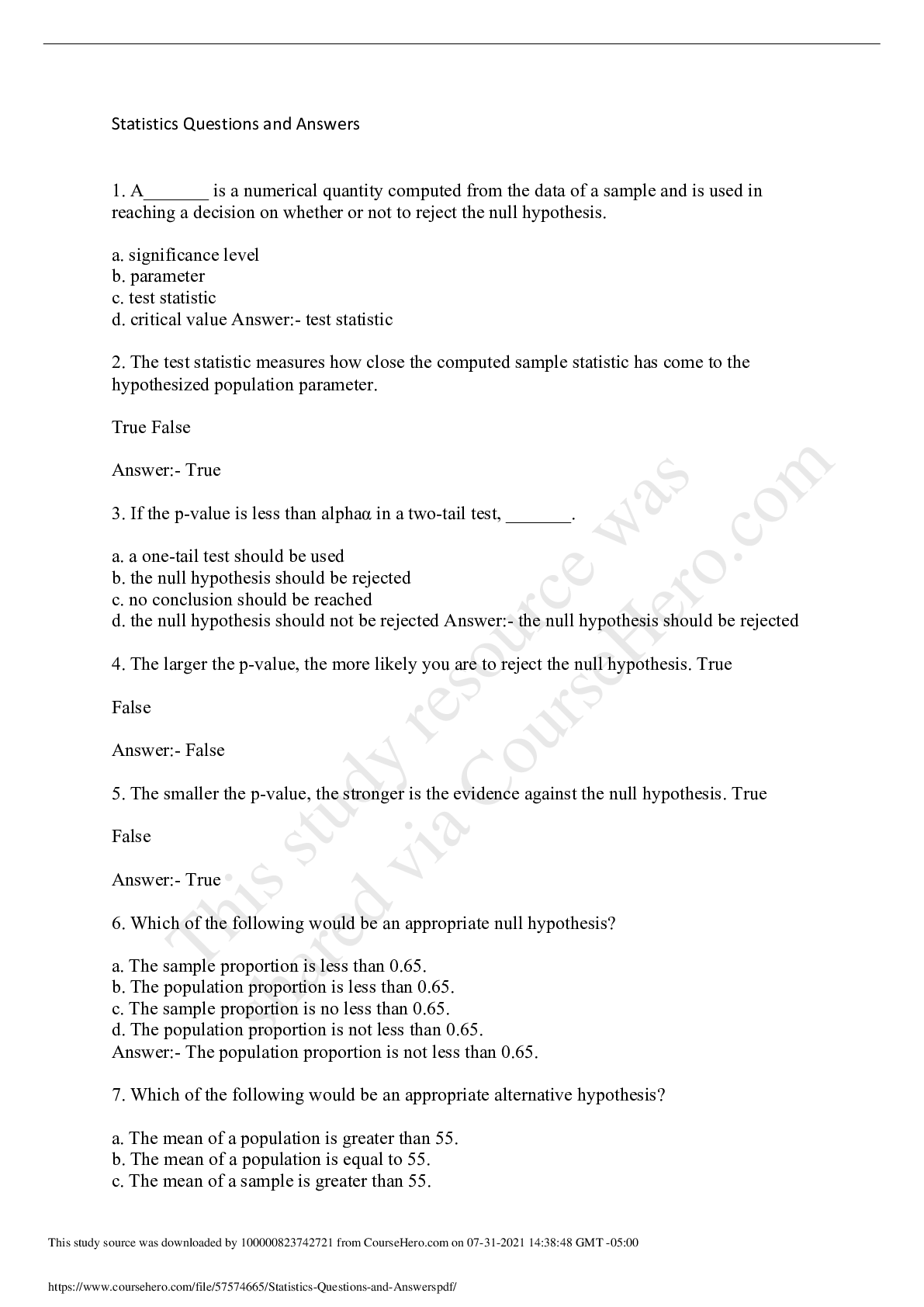

.png)


